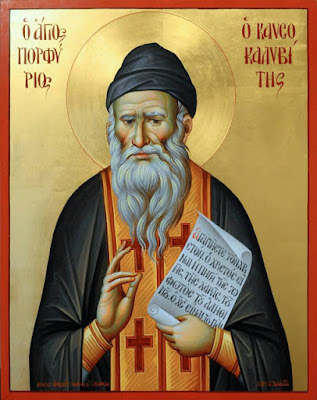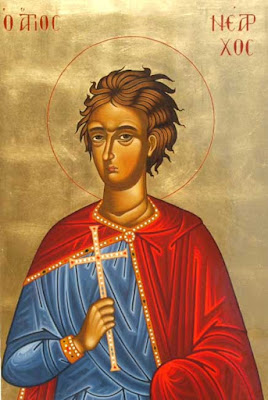On Difficulties in Sacred Scripture:
The Responses to Thalassios
Question 20
What is the meaning in the Gospel of the fig tree that to all appearances withered contrary to reason? And what is the inordinate hunger of Christ that sought for figs out of season? And what is the meaning of a curse placed upon something that is devoid of sense?
Response
The Divine Word, who governs everything with wisdom for the sake of human salvation, first trained human nature with a law requiring a more corporeal observance, because humanity's ignorance of, and estrangement from, the archtype of divine realities was preventing it from receiving the truth free of figurative veils. Afterwards, manifestly becoming man by taking on flesh possessing an intellective and rational soul, He redirected the course of human nature - insofar as He is the Word - toward immaterial and cognitive worship in the Spirit. Once the truth was made manifest to human life, the Word did not want a shadow to hold sway over that life, a shadow whose very type and figure is the fig tree. This is why Scripture says that He encountered the fig tree "while returning from Bethany to Jerusalem." In other words, after His figurative, shadowy, and hidden presence in the law, He becomes present anew to human nature through the flesh (for this is how one must understand "returning"), for it was then that "He saw a fig tree on the way of having nothing but leaves." It is evident that the tree is the corporeal observance of the law, existing in shadows and figures, having an unstable and transient tradition, which is why it is found "on the way," being a sign of passing figures and precepts. Seeing that, like a fig tree, it was ostentatiously and extravagantly adorned by the outward leaves of the corporeal observances of the law, but finding no fruit on it - clearly no fruit of righteousness - He cursed it, since it did not provide nourishment for the Word. Or rather He commanded that the figures of the law should no longer hold sway over and conceal the truth. And this was subsequently proven to be the case through actual deeds, when the beauty of the law, which exists merely in external forms, was completely withered, and the pride that the Jews took in it was extinguished. For insofar as the truth of the fruits of righteousness was now visibly displayed, it was neither reasonable nor seasonable, that the appetites of those who travel on the road of life should be beguiled and deceived by mere "leaves," and in the process neglect the edible fruitfulness of the Word. This is why it says: "It was not the season for figs." In other words, the time when the law prevailed over human nature was not the time for the fruits of righteousness, but was rather a prefiguration of those fruits and in some way indicative of the future divine and ineffable grace that is able to save all. Since the ancient people did not arrive at this grace, they were lost through unbelief. For the divine Apostle says that: "Israel, which pursued righteousness based on the law" - referring, of course, to the law in shadows and figures - "did not arrive at the righteousness of the law," that is, the law fulfilled in the Spirit through Christ.
















































